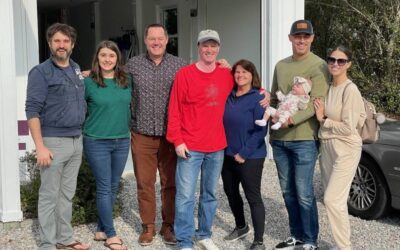One of the most important things in co-ownership is the elimination of surprises. Surprises lead to stress. Stress leads to conflict. Conflict leads to unhappiness. (Star Wars nerds, who is with me!?!).
And our mantra here at Plum is that we want our co-owners to be as happy in year 7 as they are on day one. So, everything we do is about the elimination of surprises.
One really important tool for doing this is the Reserve Fund. It’s money that the group sets aside, at closing, to handle life’s inevitable surprises. The Plum Reserve Fund offsets two major risks for co-owners, and in doing so, provides for happier groups.
Job #1 – Hedge Against Unexpected Maintenance and Repair Costs
The first and most obvious thing is to be financially in a position to handle things like an HVAC needing to be replaced years before expected, or the discovery that the retaining wall down by the shore has to be repaired. In poorly structured groups, this is when everyone gets alligator arms and can’t seem to reach their wallets. There’s high emotion, pressure to reach a decision, and yet another capital call. No one likes that experience. In high functioning groups of co-owners, there is a reserve fund to handle exactly these scenarios. It’s appropriately funded and well maintained. It’s there to be used in situations like this, and it thus takes “the sting” out of having to handle a repair. It’s great for peace of mind, and allows everyone to breathe a sigh of relief and say “well, it’s good we planned for this!”
Job #2 – Offset the Risk of a Co-owner Not Paying Their Share
This risk is already heavily mitigated for Plum co-owners. Everyone is PlumCertified before they are joined as a group, meaning that everyone has passed financial and criminal background checks, and have demonstrated that they have the liquid assets required to participate in the purchase and maintenance of the house. Secondly, the SHARE (Shared Homeowner Agreement for Real Equity) states that if someone fails to make their payments, that they immediately become a “non-contirbuting member” who loses their voting rights, and if they fail to quickly rectify the situation, the share is sold with a 40% penalty fee (which goes back to the group members who are in good standing). Missing your payments is very painful, on purpose, and it is codified in the operating agreement. So, the net of it is that there are protections already built it to keep people from missing their capital contributions.
That said, the power of the Reserve Fund really comes into play here. The group can leverage the reserve fund dollars to cover the delinquency, meaning that the co-owners who are in good standing don’t need to dip into their own pockets… they can use the non-contributing members dollars out of the reserve fund.
Reserve Fund = 3% of Value of House at Closing
Plum CoOwnership groups have a 3% fund that is mandated for everyone’s safety, codified in the SHARE Operating Agreement, and collected at closing. So, for example, a $1.5MM home would have a reserve fund of $45k. If there are 5 co-owners, for example, each member would contribute $9k at closing, and those funds would be held in the group’s joint banking account (which we set up and configure for our co-owners to be sure everyone can see every transaction and every statement).
Replenishing the Fund
If the group uses money from the fund, that’s great! That’s what it is there for. You can think of it as self-insurance. It’s important, however, to rebuild that fund so that you’ve got that blanket of protection in the future as well. The SHARE Operating Agreement calls for that to be done over 6 months, shared ratably buy percentage ownership. So, using the example from above, let’s say that the group had several appliances that were all causing issues, and it was decided to buy $15k worth of nice appliances. The reserve fund could be tapped for that, bringing it from $45k down to $30k.
The group now has 6 months to rebuild to $45k. So, $15k / 6 months = $2.5k per month. There are 5 co-owners. So, each co-owner would contribute $500/mo, for 6 months, to get that protection back in place. Not all groups rent, but many do, so sometimes groups might suggest “hey, let’s all contribute our weeks to rental for the next 3 months until we’ve covered that cost.”
Groups with Well Funded Reserve Funds Over-Index for Happiness
In summary, a well funded reserve fund provides peace of mind to co-owners, and enhances smooth group operations by eliminating surprises. Plum facilitates this process for it’s co-owners to make sure that they are as happy in year 7 as they are on day 1.




